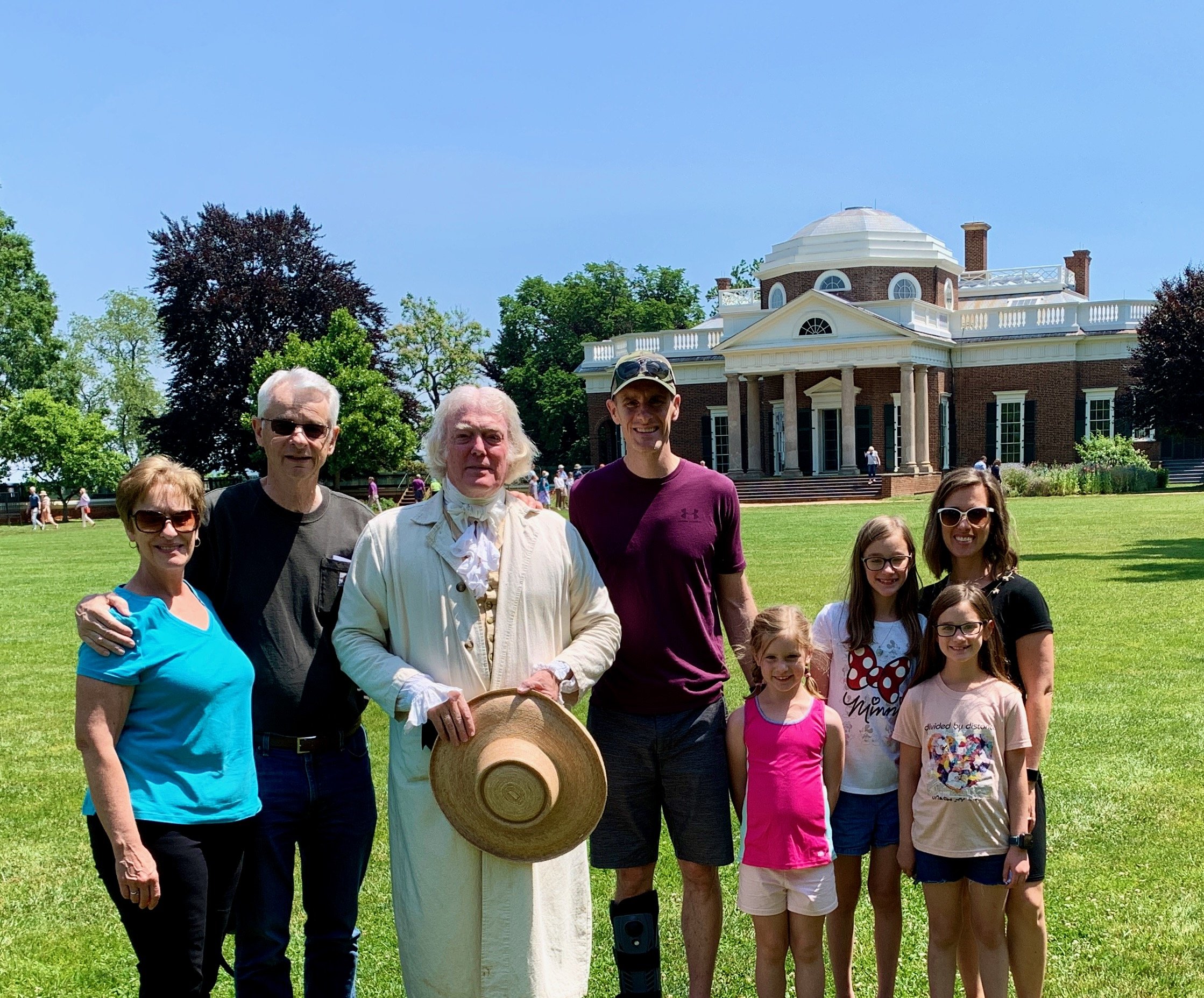After Thomas Jefferson returned to the United States in 1789, he began the extensive rebuilding of Monticello. He added the distinctive second-story octagonal dome that included design elements of the Halles aux Blés to become the first feature of its kind for an American residence. As president in 1805, Jefferson directed British-American architect Benjamin Latrobe (1764-1820) to construct the ceiling for the new Capitol Building’s House of Representatives chamber based on the Paris grain market design. Despite Latrobe’s concerns about leakage, Jefferson’s intentions to build “the handsomest room on the world” prevailed although it was destroyed when the British burned the Capitol in 1814. Latrobe applied similar principles in the design of the first cathedral in America, Baltimore’s Basilica of the Assumption (1806-1821) to form the skylit lumiere mysterieuse (mysterious light) that to this day still hovers above the altar.
Visiting Jefferson’s Monticello with family
The Founders’ grand visions for New World prosperity was translated into Charles Bulfinch’s neoclassical Federal Style design and decoration of the United States Capitol Building that featured numerous agrarian associations. The massive inner and outer domes crowning the original central 1800 structure were completed in the 1860s with an inner oculus that reveals an enormous fresco covering approximately 5,000 square feet, The Apotheosis of Washington (1865) by Italian-American artist Constantino Brumidi (1805-1880). The painting depicts George Washington enthroned amidst the heavenlies above six allegorical perimeter scenes. Brumidi’s Agriculture shows Ceres with a wreath of wheat and cornucopia perched atop a mechanical reaper assisted by a capped Young America who holds the reins of the horses. Flora gathers flowers nearby.
Constantine Brumidi, The Apotheosis of Washington—Agriculture (1865)
United States Capitol Building Rotunda Dome, Washington, D. C.
Architect of the Capitol Collection
Brumidi had trained at Rome’s Academy of St. Luke where he mastered trompe l’oeil (“fools the eye”) depiction of human forms on flat surfaces in three dimensions, and restored frescoes at the Vatican. His Summer in the House Appropriation Room’s four-panel Season’s series (1856) shows Ceres attended by cherubs who tend to an enormous grain sheaf and cornucopia. Bulfinch’s work influenced versatile Salem architect-woodcarver Samuel McIntire (1757-1811) whose designs of New England homes frequently featured sheaves of wheat and garlands for wall frieze and mantel ornamentation as well as for furniture.
Monticello Farming Exhibit













